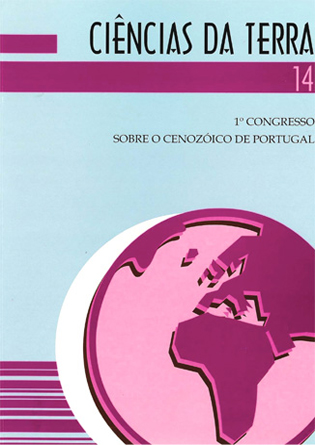The three main marine depositional cycles of the Neogene of Portugal
Abstract
Keywords: Mioccne; Pliocene; Stratigraphy; Paleogeography; Tectonics; Algarve Basin; Sado Basin; LowerTagus Basin; Mondego Basin. The present work follows a stratigraphic model of the marine Neogene of Portugal based on the definition of three main marine sedimentary cycles. Conceptually the I, II and III Neogene Cycles can be defined as 2nd order sedimentary sequences with duration ranging from 5 to 8 Ma. The I Neogene Cycle is fully represented only in the Lower Tagus Basin. Ranging from the Early Aquitanian to the Late Burdigalian the I Neogene Cycle testify a transgressive episode in the region of Lisbon and Setúbal Peninsula. Rapid lateral facies variations suggest a shallow marine basin. This cycle ends with an important Late Burdigalian tectonic compressive event expressed by uplift of the surrounding areas and deformation affecting the Early Miocene deposits of the Arrábida Chain. The II Neogene Cycle includes thick sedimentary sequences covering Paleozoic and Mesozoic formations in the Algarve and Alvalade-Melides regions and it extends as far north as Santarém in the Lower Tagus Basin. Mainly controlled by global eustasy, it was generated by the important positive eustatic trend that characterized the Middle Miocene worldwide to which the Portuguese continental margin acted more or less passively. This cycle ended with a second and the most important compression event starting after the end of the Serravallian affecting the entire Portuguese onshore and shelf areas. This led to an important depositional hiatus of marine sediments for more than 2.5 Ma. During the Early and the Middle Tortonian occurred the clockwise rotation of the Guadalquivir Basin. The thick marine units deposited afterwards in this basin produced a litostatic load, which seems to have induced subsidence farther west resuming the Neogene marine sedimentation in the Cacela region (Eastern Algarve), during the Late Tortonian. This marks the beginning of the III Neogene Cycle. To the north, in the Sado Basin (Alvalade-Melides region), a similar depositional sequence starts its sedimentation during the Messinian. Further north, in the Pombal - Caldas da Rainha region, marine sedimentation started during the Late Pliocene (Piacenzian). The migration in time, from south to north for the beginning of the marine sedimentation of this cycle is interpreted as reflecting a visco-elastic propagation of the deformation from the Betic chain northwards.Downloads
Published
2009-06-09
Issue
Section
Articles






